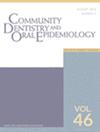Psychometric Validation of the FACE-Q Dental Module in Patients With Malocclusions
Abstract
Objective
The FACE-Q Craniofacial Module is a patient-reported outcome measure (PROM) developed for children and young adults with craniofacial conditions. We hypothesised that some of its scales may be applicable to other populations. The aim of this study was to assess the validity and reliability of FACE-Q scales for patients with dental malocclusions.
Methods
The FACE-Q Dental Module includes 5 scales from the Craniofacial Module that measure appearance (Face, Jaws, Smile and Teeth) and function (Eating/Drinking). Data were collected from patients aged 8–29 years who presented with a dental malocclusion (pre-treatment) or 1–2 years after orthodontic treatment (post-treatment) at a large university-based orthodontic specialty clinic in Canada between September 2018 and March 2020. Patients completed a paper questionnaire booklet, and data were entered into a Research Electronic Data Capture (REDCap) survey. The psychometric analysis was performed using Rasch Measurement Theory (RMT) analysis.
Results
The sample of 434 patients was aged 9 to 29 years, with 249 female and 185 male participants. The sample included 252 pre-treatment and 182 post-treatment patients. The 4 appearance scales evidenced strong psychometric performance; all 37 items had ordered thresholds with good item fit to the Rasch model. Reliability was high, with person separation index and Cronbach alpha values, with and without extremes ≥ 0.86. As hypothesised, those participants who had a major difference in appearance, and those who reported liking their appearance less, scored lower on the appearance scales (p < 0.001). In the RMT analysis, the Eating/Drinking scale evidenced low reliability and poor targeting with close to 40% of particpants scoring at the ceiling.
Conclusion
The FACE-Q Dental Module provides a means to collect evidence-based outcomes data from children and young adults who undergo orthodontic care for dental malocclusions.


 求助内容:
求助内容: 应助结果提醒方式:
应助结果提醒方式:


